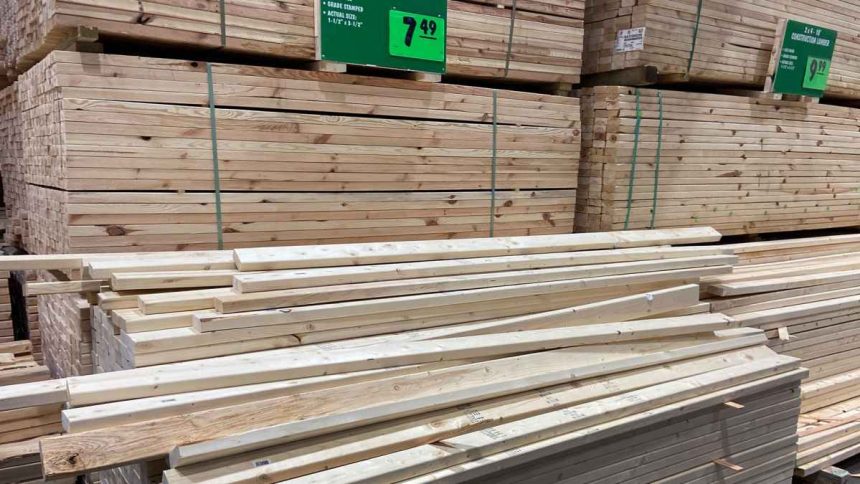Owning a home comes with numerous joys – the freedom to decorate as you please, the pride of a well-manicured lawn, and the satisfaction of making memories in a space that is truly yours. However, this joy is not without its challenges. One such challenge that often remains out of sight but shouldn’t be out of mind is lumber decay. This silent destroyer can wreak havoc on the structural integrity of your home and furniture, leading to safety hazards and heavy repair costs.
Whether you’re a novice homeowner, a seasoned DIY enthusiast, or somewhere in between, understanding lumber decay – its causes, preventive measures, and remediation methods – is essential. This comprehensive guide aims to equip you with the knowledge to combat lumber decay effectively. It details the common issues leading to wood decay, preventive strategies, treatment options for decayed lumber, regular maintenance checks, and how online lumber delivery services can make your life easier.
Understanding Lumber Decay
The word ‘decay’ often sparks thoughts of a grim, unavoidable decline, particularly when applied to a prized asset like your home or furniture. This doesn’t have to be the case. Let’s dive into the principal causes of lumber decay and its implications.
Wood decay often stems from moisture, improper storage, and insect infestations. These issues might seem trivial initially but can escalate to significant problems if ignored. Moisture, for example, fosters a favorable environment for fungi that feast on wood, causing it to decay. The wrong storage conditions could further speed up this process, and insects like termites pose a potent threat to your wooden structures. The decay compromises the structural integrity of your homes and furniture, leaving you with a safety hazard and hefty repair costs.
Preventive Measures Against Lumber Decay
There’s a popular saying – ‘prevention is better than cure.’ In the context of lumber decay, it’s much more cost-effective to prevent the problem than to tackle it after it has taken hold.
1. Choosing Decay-Resistant Lumber –
Selecting the right wood is crucial in your battle against decay. Some wood types naturally resist decay, such as cedar and redwood. Available at most lumber yards, these varieties have inherent properties that deter decay-inducing agents. Utilizing these types of lumber can increase the durability of your structures and save significant costs in the long run.
2. Managing Moisture Effectively –
Control of moisture is essential to prevent lumber decay. When storing your wood, ensure it’s in a dry, well-ventilated space. For installed lumber, moisture barriers can be used to prevent excessive absorption. A well-managed moisture control strategy can extend the life of your structures, offering more bang for your buck given the current lumber market.
3. Utilizing Wood Preservatives –
Another preventative strategy involves the judicious use of wood preservatives. These substances, ranging from water-repellents to insecticides and fungicides, offer an extra layer of protection to your wood. Not only does this enhance the wood’s aesthetic appeal, but it also prolongs its life.
Remediation Methods for Lumber Decay
Unfortunately, if wood decay has already set in, preventive measures won’t suffice. Fear not, there are remediation methods to restore your lumber to its former glory.
DIY Solutions for Lumber Decay
Before you reach out to professionals, you might want to try some DIY solutions. There are products in the market that help restore rotten wood. Following the instructions on these products can help you restore the strength and appearance of your wood. However, safety is paramount when handling these substances, so be sure to follow the provided safety guidelines.
Professional Services for Treating Lumber Decay
In more severe cases, professional help might be needed. Professionals possess the knowledge, experience, and tools to tackle stubborn decay. The cost of these services can be justified by the quality of the restoration and the peace of mind that comes with it.
Maintenance and Checks for Lumber Decay
Regardless of whether you’re preventing or treating decay, regular checks should be part of your maintenance plan. Maintenance isn’t just about fixing problems; it’s also about preventing them. Regularly checking your lumber for early signs of decay can save you a lot of trouble. This means inspecting for signs of moisture, insect activity, and the first signs of decay. Using a simple flashlight and a screwdriver, you can inspect and poke the wood to check for soft spots, which might indicate decay.
Buying Construction Materials Online
As we delve into the age of technology, the way we procure our construction materials has evolved. With the rise of online delivery services, getting the construction materials you need has become a breeze. Simply place your order, and get lumber delivered right to your doorstep. This convenience enables you to prevent and treat lumber decay quickly, ensuring that your home and furniture stay in top-notch condition.
Evaluating and Refining Your Maintenance Plan
Implementing preventive measures and treatment methods is just half the battle; assessing their effectiveness is equally important. Over time, your preventive and treatment methods should show results. Checking for signs of improvement can help you understand whether your methods are effective. If not, don’t fret. This is a learning opportunity to refine your maintenance plan.
Dealing with lumber decay may seem daunting at first, but with the right knowledge, tools, and materials, you can keep your home and furniture safe and durable. Remember, regular checks and early detection are critical. Moreover, online lumber delivery services have made it easier than ever to get the materials you need. Now, armed with these tips and tricks, you are well-prepared to combat lumber decay.
Lynn Martelli is an editor at Readability. She received her MFA in Creative Writing from Antioch University and has worked as an editor for over 10 years. Lynn has edited a wide variety of books, including fiction, non-fiction, memoirs, and more. In her free time, Lynn enjoys reading, writing, and spending time with her family and friends.















